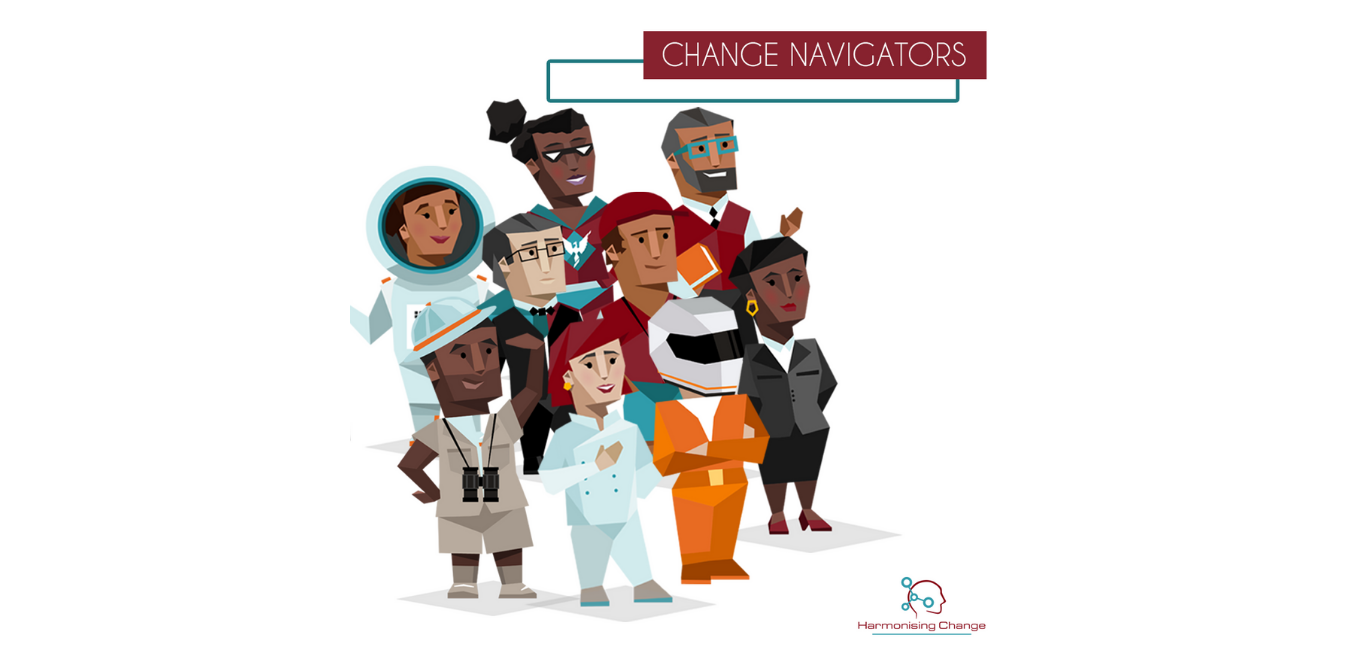
Supporting Innovation and Change Management in your business
As we’re nearing the end quarter of 2020, we’ve started to look back at the year and what it meant for Change Enablement within organisations.
In essence, focusing on the positives, 2020 created a global simulation in which it forced the onset of change. People, businesses, economies and nations the world over were forced to innovate, adapt and survive.
But, transformation requires innovation. Innovation requires creativity, and creativity requires leadership. Many businesses have found themselves well equipped with strategic innovative ideas but have had little support from their own people in executing these. Mostly because there is no plan in place for driving this transformation.

The importance of change navigators.
These individuals are focused on planning, initiating and implementing change strategies within the organisation, but it is important that the business is ready for this journey. One point of ‘readiness’ is measured by the level of support given to Change Navigators within the organisation. If these Navigators are constantly being met with resistance, the approach to implementing these strategies is flawed. As such, the organisation’s ability to change will become largely dependent on the freedom, autonomy, resources and support these Change Navigators have in place. If they are marginalised, isolated or made to feel that that their agendas are not prioritised, the companies ability to change, and in turn innovate, will be unsuccessful.
To ensure that this culture of innovation remains effective, and is used to the benefit of the company, the business needs to create an environment that continuously supports Change Navigators and their agendas.
There are 4 main ways to achieve this.
- Welcome input. As Amy Edmondson wrote in The Fearless Organization, there is no way to master innovation unless employees are free to speak up, share their knowledge, and keep their bosses in check.
- Fail. Foster a culture of innovation by embracing failure as an option. Experimentation is the only true form of innovation. As Jeff Bezos noted in his early Amazon years, “if you know it’s going to work, then it’s not innovation”.
- Diversify. Growing a diverse team means that you and the business are creating an inclusive culture where people are valued, tolerated and embraced for being different. This also means that you’re bringing different opinions and perspectives to the team that will result in healthy debates.
- Protect your Agenda. As an innovative business, you will need to protect and shield employees from those who are passionately committed to stopping change, censoring unusual and experimental ideas, or inhibiting progress.
It goes without saying that the individuals that make up the organisation are responsible for innovation and bringing about change. It is important to be supportive of all employees during any kind of transformation; supporting the disruptive team members whilst continuing to encourage those employees with a more positive outlook.
Who said it best?
Vice President and General Manager at Southern Glazer’s Wine & Spirits in a recent Linkedin Post wrote: “People don’t mind change. I see people change all the time. We are always changing. It’s just that people don’t like when change is sudden and without support. We all need communication that change is coming so we can be prepared, know what is expected and help learn new skills the change will require. Just the basics of change management. Here’s the thing, change requires managers to put in effort and help us with the change. I hear managers preach all the time about how we have to change and keep changing, change, change, change. Yet not many talk about HOW to change or offers support to change. The greatest change happens when a leader gets in the trenches with us, understands we are only human and knows what people need during a time of change.”
Contact Harmonising Change For More Information.



